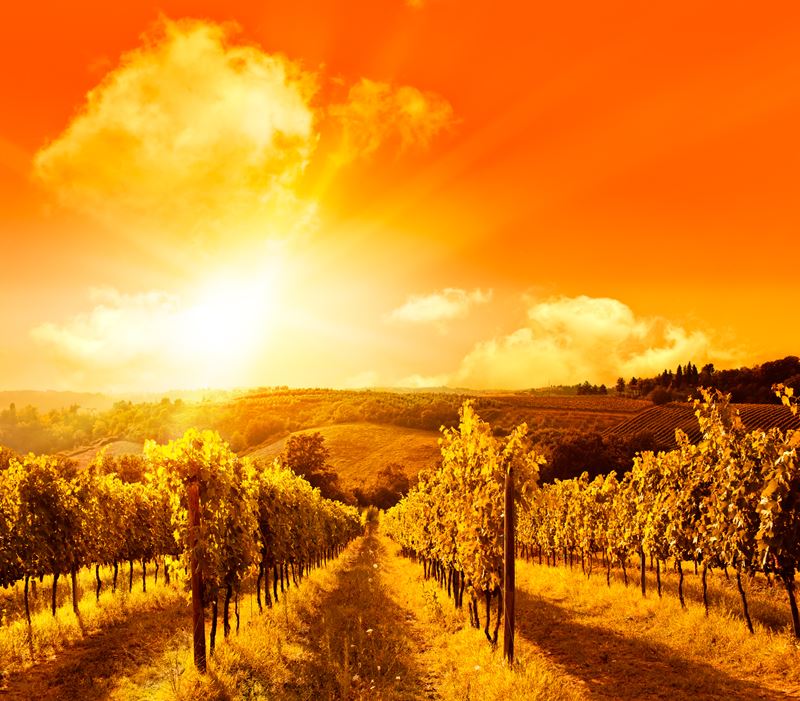Beloved wine regions face disappearance due to climate change
Climate Study Raises Alarm
2024-04-01

The romance of winemaking, with its idyllic vineyard landscapes and the artistry of turning grapes into wine, is facing an unprecedented challenge. The latest research, as detailed by Cornelis van Leeuwen and his team at the University of Bordeaux in the Nature Reviews Earth and Environment journal, paints a sobering picture of the future for many of the world's most cherished wine regions. As climate change accelerates, traditional wine-growing areas in Spain, Italy, Greece, and southern California are under threat, with predictions that 90% could be at risk of disappearing by the end of this century due to excessive drought and more frequent heatwaves.
The study is a comprehensive look at how the changing climate—through shifts in temperature, precipitation, humidity, radiation, and CO2 levels—is altering the global wine production landscape. Traditionally, wine regions have thrived in mid-latitude areas, where the warmth is just right for ripening grapes without the excessive heat that can ruin a crop, and where conditions are dry enough to keep diseases at bay. But now, these regions are in jeopardy, and new areas are emerging as potential wine havens.
In response to warmer temperatures, regions such as Washington State in the U.S., the southern United Kingdom, and Tasmania are being eyed as the next frontier for wine production. These areas, previously considered too cool for growing grapes suitable for high-quality wine, are now seeing conditions that could favor viticulture, thanks to the very climate change that is threatening established regions.
The researchers advocate for adaptation strategies to mitigate the worst effects of climate warming. These include adopting different plant materials—such as grape varieties and rootstocks—altering training systems, and evolving general vineyard management practices. However, the team warns that even with these adaptations, maintaining economically viable wine production may be challenging, underscoring the need for further research to assess the economic impacts of climate change adaptation on a large scale.
The study also highlights the accelerated changes already observed in French regions like Bordeaux and Alsace. Here, shifts in harvest dates and rising alcohol levels point to the profound effects climate change is having on wine production—a trend that's likely to continue and possibly intensify in the 21st century. The scientists note the potential for increased pressure from temperature rises and droughts in hot and dry regions, which could lead to a loss of suitability for wine production, with significant social and economic fallout.
Moreover, severe weather events beyond just heat and drought—like hailstorms—pose additional threats to vineyards. While some projections of these impacts may be overly pessimistic, not accounting for potential adaptations by growers, the reality remains that some regions are already experiencing conditions near their breaking points.
As the geography of wine production shifts, there will indeed be winners and losers. Some regions will become untenable for traditional viticulture, while others may emerge as new centers for wine production. However, this transition isn't without its environmental implications. The expansion of viticulture into new areas brings concerns over water use, the conversion of wild lands, and the impact on natural ecosystems and biodiversity.
The University of Bordeaux's study is a call to action for the wine industry, researchers, and policymakers. It emphasizes the need for comprehensive monitoring programs to track the impacts of climate change on viticulture and to implement mitigation strategies that consider both economic viability and environmental sustainability. As the world of wine stands at this crossroads, the choices made today will shape the future of an industry deeply intertwined with culture, tradition, and the environment.
Founded in 2007, Vinetur® is a registered trademark of VGSC S.L. with a long history in the wine industry.
VGSC, S.L. with VAT number B70255591 is a spanish company legally registered in the Commercial Register of the city of Santiago de Compostela, with registration number: Bulletin 181, Reference 356049 in Volume 13, Page 107, Section 6, Sheet 45028, Entry 2.
Email: [email protected]
Headquarters and offices located in Vilagarcia de Arousa, Spain.